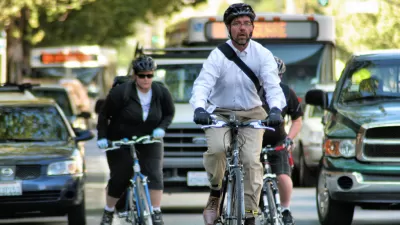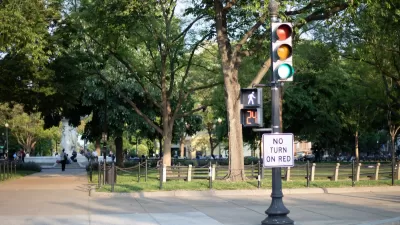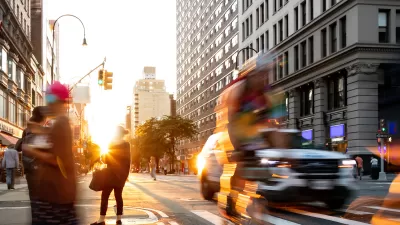A study examines whether and why bicyclists break traffic laws to shed light on how rational those laws really are.

In the Washington Post's "Tripping" blog, Fredrick Kunkle analyzes a study on the behavioral psychology of cycling. That is, the mental calculus cyclists perform to respond to variables like infrastructure, law enforcement, and other users of the road.
Perhaps unsurprisingly, Kunkle writes, "the upshot is that bicyclists are often trying to do the best they can when faced with moving dangers all around and a very small proportion of infrastructure restricted for their use."
The reason most bicyclists (71 percent) violate traffic rules is a bid for self-preservation. Other reasons include saving energy (56 percent) or saving time (50 percent) or attempting to increase one's visibility (47 percent). In other words, the study found that a large number of bicyclists tend to break the law because they think it will keep them safer.
If the way people ride bikes is a reflection of their needs on the road—along the lines of a desire path—then codifying the most common practices into law could better protect cyclists who find them necessary, the report suggests.
Kunkle's analysis comes ahead of the launch of dockless bikeshare in D.C., which is expected to expand ridership in underserved areas. Kunkle also examines other trends in the report, including how other road users navigate traffic laws and how cycling norms evolve in different places.

Alabama: Trump Terminates Settlements for Black Communities Harmed By Raw Sewage
Trump deemed the landmark civil rights agreement “illegal DEI and environmental justice policy.”

Study: Maui’s Plan to Convert Vacation Rentals to Long-Term Housing Could Cause Nearly $1 Billion Economic Loss
The plan would reduce visitor accommodation by 25% resulting in 1,900 jobs lost.

Planetizen Federal Action Tracker
A weekly monitor of how Trump’s orders and actions are impacting planners and planning in America.

Waymo Gets Permission to Map SF’s Market Street
If allowed to operate on the traffic-restricted street, Waymo’s autonomous taxis would have a leg up over ride-hailing competitors — and counter the city’s efforts to grow bike and pedestrian on the thoroughfare.

Parklet Symposium Highlights the Success of Shared Spaces
Parklets got a boost during the Covid-19 pandemic, when the concept was translated to outdoor dining programs that offered restaurants a lifeline during the shutdown.

Federal Homelessness Agency Places Entire Staff on Leave
The U.S. Interagency Council on Homelessness is the only federal agency dedicated to preventing and ending homelessness.
Urban Design for Planners 1: Software Tools
This six-course series explores essential urban design concepts using open source software and equips planners with the tools they need to participate fully in the urban design process.
Planning for Universal Design
Learn the tools for implementing Universal Design in planning regulations.
Caltrans
Smith Gee Studio
Institute for Housing and Urban Development Studies (IHS)
City of Grandview
Harvard GSD Executive Education
Toledo-Lucas County Plan Commissions
Salt Lake City
NYU Wagner Graduate School of Public Service




























